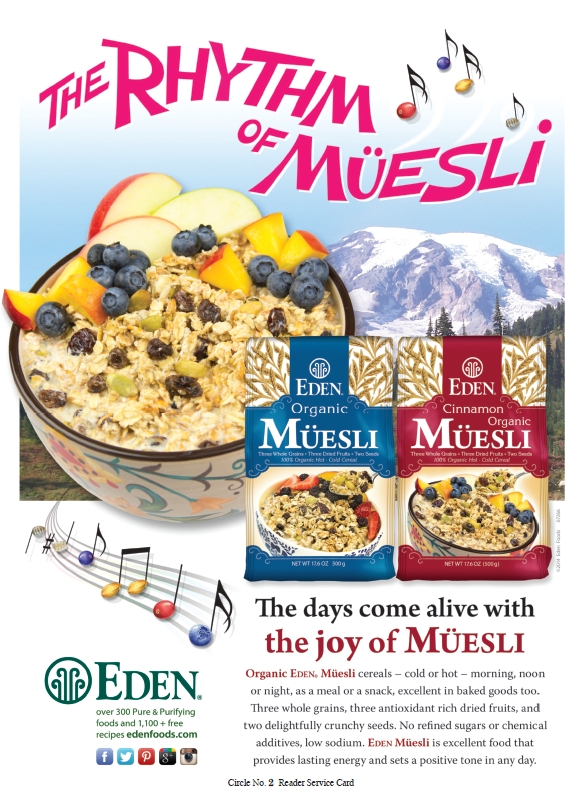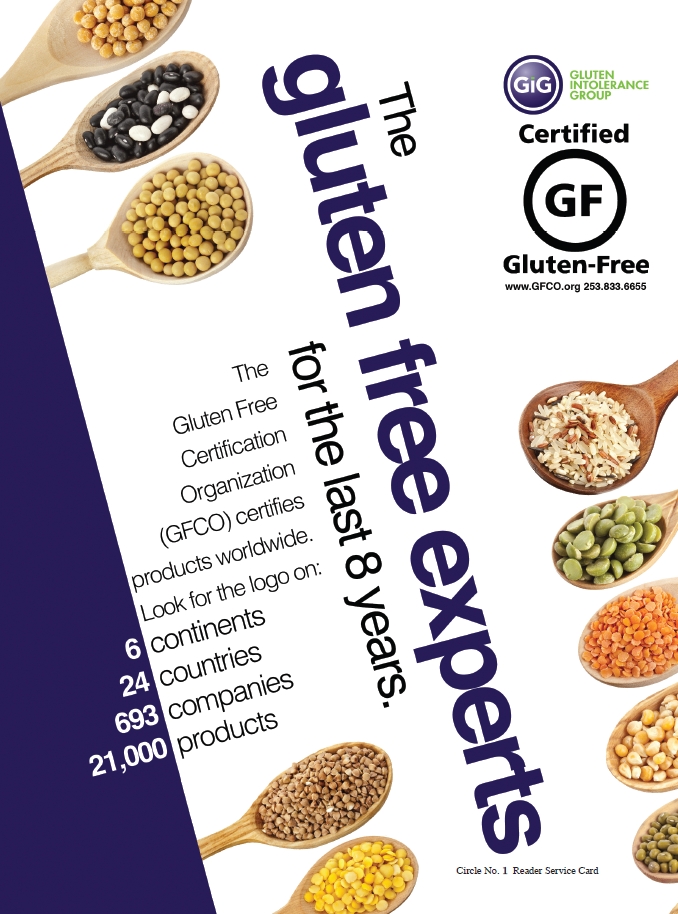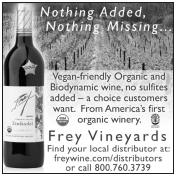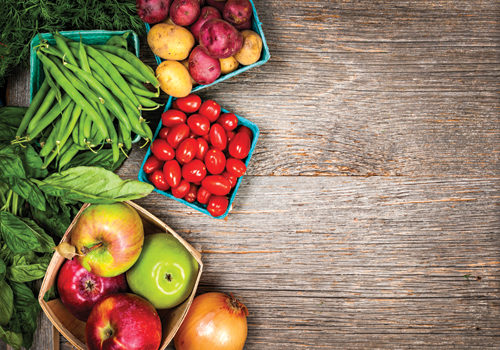All signs point to a continued rise in interest in alternative diets. A 2012 study from the Vegetarian Resource Group found that 2.5% of U.S. consumers self-identified as “vegan,” up from 1% since as recently as 2009 (1). Couple this with the documented decline in meat consumption, and it is clear that widespread dietary changes are afoot. Raw food-centered lifestyles also continue to garner interest. In each of these areas, food companies are stepping up to the plate to turn curious shoppers into loyal customers through marketing and innovation.
Hop on the Bandwagon
Why, now, are diets like these being adopted and experimented with like never before?
According to Allison Meyer, director of marketing at Dr. Praeger’s Sensible Foods, Elmwood Park, NJ, health and wellness concerns are growing steadily among all consumers, and this translates into dietary changes. “More people are making an effort to eat natural, balanced and clean foods in their day-to-day lives. Trends like Meatless Monday are creating a movement for consumers who don’t want to stop eating meat, but who do want to eat healthier, more sensible foods regularly,” Meyer says. Such structured experiments with vegetarianism and veganism allow people to dabble and make positive change without feeling restricted, she explains.
“People want to know where their foods come  from and what goes into them—they don’t want to see ingredients they can’t pronounce. They also seek out companies operating responsibly and sustainably and whose values align with their own,” says Katherine Franklin, director of marketing for Follow Your Heart, Chatsworth, CA. These factors, combined with the improving taste of these products, are drawing in more types of customers to the vegan/vegetarian space.
from and what goes into them—they don’t want to see ingredients they can’t pronounce. They also seek out companies operating responsibly and sustainably and whose values align with their own,” says Katherine Franklin, director of marketing for Follow Your Heart, Chatsworth, CA. These factors, combined with the improving taste of these products, are drawing in more types of customers to the vegan/vegetarian space.
According to Jamie Schapiro, director of marketing for GO Veggie! (formerly Galaxy Nutritional Foods), North Kingston, RI, advancements in food science like those by his company have helped improve not just the taste, but also the functionality of alternative diet products. For example, the improved taste and melt quality of his company’s cheese alternatives help to fill a need for many people.
Of course, category growth is also being spurred by newcomers to traditional vegan/vegetarian lifestyles. Franklin says people who adopt such diets as lifestyles for nutritional and/or ethical reasons are her company’s core consumers.
Besides those who follow restricted diets on principle, Schapiro explains that more are turning to plant-based diets as a health measure. Concerns like obesity, heart disease, cancer, type-2 diabetes, hypertension and other life-threatening conditions, along with allergies and intolerances, are steering consumers toward plant-based products including dairy-free alternatives. Schapiro says his company “will continue to help ease that overwhelming feeling these people experience when trying to navigate the food scene; to cater to a variety of tastes, dietary restrictions and health goals with cheese-free products for everyone.”
Those maintaining meat- and dairy-free diets require other sources of nutrition, which can easily be found when they know where to look. Nut butters, for example, can serve as handy and enjoyable vegan staples. Gael Orr, communications manager for Once Again Nut Butter, Nunda, NY, says many customers are avowed vegans and vegetarians.  “We assist our vegetarian shoppers by putting a vegan symbol on our products. While we recognize that most people know that nut butters are vegan, we also know that it is comforting to a vegetarian to have that added assurance beyond the ingredients listed on the label,” Orr says.
“We assist our vegetarian shoppers by putting a vegan symbol on our products. While we recognize that most people know that nut butters are vegan, we also know that it is comforting to a vegetarian to have that added assurance beyond the ingredients listed on the label,” Orr says.
Nut butters can represent a valuable nutritional resource, Orr says, as her company’s products contain about nine grams of protein per two tablespoon serving. While the protein content in these nut butters is consistent among types, different options provide varying amounts of fiber and other nutrient content. Vitamin E, for example, is found in sunflower butter, while peanut butter contains niacin. “Additionally, there are flavor differences that are appealing, and we have worked hard to create a robust list of recipes that are vegetarian, vegan and gluten-free friendly,” says Orr. She suggests the Web site www.whfoods.com for more information on nut butters.
Heather Goldberg, GO Veggie! vegan chef ambassador and Spork Foods co-owner, says the health benefits of choosing meat and dairy alternatives are obvious, limiting cholesterol intake being one. There are other less tangible, but nonetheless real benefits, as well. “What we find in our vegan cooking classes is that when people try these dishes, they are lighter. People end up feeling so satisfied and energized instead of full and sleepy,” Goldberg says. Despite eating a “cheesy” non-dairy meal, people tell them they don’t experience the stomachaches they are accustomed to.
Goldberg points out that most of the world’s population is lactose intolerant, so dairy-free products empower people to enjoy dishes they couldn’t otherwise. “There is so much culture and tradition tied up with food, and these products enable people to preserve and change them slightly,” Goldberg says. She explains that students go crazy for gourmet dishes like truffled parmesan risotto balls created with Go Veggie! Parmesan. When the results of these recipes are shared with others, “No one even can tell that the parmesan is vegan. That’s how far this has come,” she says.
 Meat alternatives like the vegan seafood from Sophie’s Kitchen, Sebastopol, CA, are a more enticing and interesting way of consuming plant-based fiber and protein than the protein powders many vegans use, according to founder Eugene Wang.
Meat alternatives like the vegan seafood from Sophie’s Kitchen, Sebastopol, CA, are a more enticing and interesting way of consuming plant-based fiber and protein than the protein powders many vegans use, according to founder Eugene Wang.
As drivers of the meat-free market, celebrity advocates and social dynamics rank high, according to Wang. While people may focus on the increasing health consciousness among consumers, Wang makes the point that this trend has been occurring for more than a decade. “So the question is, what is the drive behind the growth of the meat alternative sector? I would say it is definitely the celebrities,” he says.
From Beyoncé to Bill Clinton, high-profile vegans and vegetarians have been making people aware that reducing meat consumption can help the environment and improve personal health. They also increase the “cool factor” associated with these diets. Of course, some of these glamorous personalities have dumped their special diets, or turned out to be less than perfect in adhering to them. This shows that these diets have a social appeal in and of themselves, Wang believes. This effect is seen in the many comments touting these diets that are posted to social media, he adds.
|
What’s New with Meat- and Dairy-Free Products
Improvements and product redesigns are major parts of the landscape in the meat and dairy alternatives space. Product makers continue to push their products so that they stack up well in terms of taste, performance and nutrition. Allison Meyer, director of marketing at Dr. Praeger’s Sensible Foods, Elmwood Park, NJ, notes her company’s inclusion of kale, a trendy health food, in a meatless burger that is gluten-free and rich in vegetables and vitamins. Most of the products from Meyer’s company are also GMO-free, and she says they are in the process of working with the Non-GMO Project on verification. Beyond providing nutritious and desirable ingredients, the overall focus is on transparancy, she says. While Katherine Franklin, director of marketing for Follow Your Heart, Chatsworth, CA, says her company’s eggless mayo line Vegenaise dates back to the 1970s, it has continually created spinoffs and new products to appeal to new consumers. Recently, a gourmet line was introduced to appeal to “culinarians” with flavors like pesto, chipotle and roasted garlic. Franklin shares other product features designed to spread the appeal, including reduced fat, soy-free, grapeseed and organic versions. For the sustainable set and the convenience-minded, she says they have introduced a PET plastic squeeze bottle. “Whether it’s new flavor profiles or convenient and sustainable new packaging, we are always looking for ways to continue to innovate to keep up with what our consumers are asking for,” Franklin says. Also looking to improve ingredient profiles in its products is Sophie’s Kitchen, Sebastopol, CA. Founder Eugene Wang says that the company previously used a yeast extract in its vegan shrimp and calimari products. “Now, we are replacing that with all-natural fenugreek powder,” he says. Though not many customers asked for the change, Wang saw an opportunity to update his formulas with fenugreek, which has known health benefits. He also cites Non-GMO Project verification, kosher certification and gluten-free as examples of the incremental improvements to products that consumers look for. With its cheese and dairy alternatives, Jamie Schapiro, director of marketing for GO Veggie! (formerly Galaxy Nutritional Foods), North Kingston, RI, says his company is committed to finding the right amount and blend of ingredients to achieve the taste and melt of real dairy products. The obstacle is that this is difficult and expensive to do. But Schapiro says, for example, that with its dairy-free cream cheese, his company has overcome the challenge of creating the desired mouth feel and texture by culturing the product like real cream cheese. “One of the first things we hear from consumers who sample our product is how noticeably similar our texture is to dairy cream cheese,” he says. |
Another factor is the venture capital flowing into this market. A few years ago, there was less interest from investors in food technology, and meat alternatives in particular, but now Wang says they are paying more attention. As technology startups in Silicon Valley have run out of steam, investors are looking for something new to create momentum, and food innovation fits well with their investment ideology, according to Wang.
This influx of money helps companies create awareness about their products. New companies in the category might not make much profit at first, but they have the funds to go to the media to get exposure and news coverage. This makes alternative diets a topic of conversation for more people. Putting together the cool factor with the new venture capital, along with the high-profile, disturbing meat industry controversies that circulate every so often, we see a picture of just why interest is picking up.
Meyer also points out that the past several years have brought annual increases in natural and organic sales, and those who are vegan, vegetarian or trying to cut meat consumption fuel this trend. They are selecting foods that make them feel healthier, and “these selections align with the ‘free from’ movement for informed eating, and expand sales in vegetarian, vegan and raw food alternatives, forming a permanent category in the market,” Meyer says.
But sales and market share do not always keep up with consumer interest. There is a factor creating a lag in turning interest into actual sales of these products, Wang says. “There is indeed a consumer interest in buying more meat alternative products, the retailers are just reacting very slowly,” he explains. While his company’s products are already in many stores, he says they receive inquiries on a daily basis from customers that can’t find the products locally. Retailers are ignoring these signals coming from consumers, so a gap exists between demand and what’s on the shelves. “My hope is that with the backing of Silicon Valley and these celebrities, one day retailers will understand this is a category that will become mainstream,” Wang says. With the advent of social media, fans of brands like Wang’s can be active in pushing retailers to adopt products, he adds.
This hope is well-founded, because the interest level certainly leads one to believe more consumers will engage with these diets at retail. Goldberg says, for instance, that in seven years of teaching vegan cooking classes, about 75% of participants have been non-vegans.
Raw at Retail
Consumer packaged goods (CPG) companies would do well to pay attention to the raw food trend, according to the market research firm Hartman Group. But they mainly refer to adopting raw as a marketing stance and maintaining a focus on less processed ingredients in CPGs. They suggest that the more important aspect of the trend is an increase in fruit and vegetable consumption, including a special focus on local and seasonal produce (2).
Simcha Weinstein, director of marketing at Albert’s Organics, Bridgeport, NJ, focuses on fresh food as the center of the raw trend. He says most people who follow a raw food diet fall into two subgroups: those that include raw meat, eggs and dairy, and those that eat only raw vegetables, fruits and nuts. His company sells more raw foods that fall into the vegan category, and has seen the raw foods trend gaining traction.
“Typically, these foods are being sold within produce departments. And while it may initially seem to be a good fit for raw foods, the marketing and merchandising of these sections in most stores needs some work. It’s evolving, but still needs to grow,” Weinstein says. If consumers are going to become more knowledgeable about raw food diets, retailers must be well-educated themselves on what raw foods are and how they are of benefit.
“Having a well merchandised and designated section for raw foods works best. Cooler strips that denote that the specific area is raw food is helpful. Additionally, a nice POS sign letting shoppers know this is the raw foods section is also beneficial,” says Weinstein. He also suggests informational handouts. Just like when organic was in its infancy and early years, he says people are full of questions about raw foods.
While the trend is still evolving, raw foods are catching on and are a natural fit in the organic and natural foods marketplace. “Once the messaging and informational infrastructure catch up to the product, I would look for raw foods to become quite popular,” he says. WF
References
1. A. Sareen, “Interest In Vegan Diets On The Rise,” Huffington Post, April 3, 2013, http://www.huffingtonpost.com/2013/04/02/interest-in-vegan-diets-on-the-rise_n_3003221.html, accessed Mar. 2, 2014.
2. “Will Raw Food Go Mainstream?” Hartman Group, June 20, 2012, http://hartbeat.hartman-group.com/article/434/Will-Raw-Food-Go-Mainstream, accessed Mar. 2, 2014.
Published in WholeFoods Magazine, April 2014










